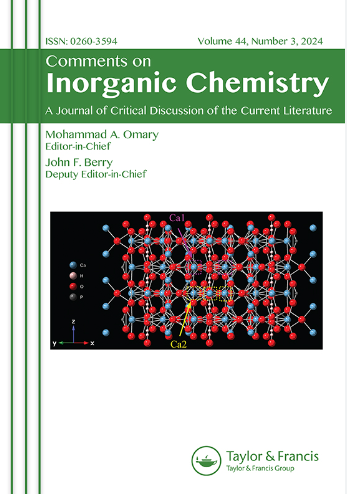植物病毒和噬菌体生态合成纳米颗粒:最新趋势和重要挑战
IF 3.8
3区 化学
Q1 CHEMISTRY, INORGANIC & NUCLEAR
引用次数: 3
摘要
人们对简单、环保、经济的纳米材料和纳米结构的合成有越来越大的需求,这些纳米材料和纳米结构具有明确的和均匀的结构。近年来,利用植物病毒和噬菌体构建创新的纳米系统和纳米制剂已成为研究热点;鉴于这些病毒具有结构对称、简单的功能化/表面修饰、体积小、各种不同的形状、简单的遗传操作、单分散性和自组装能力,因此可以用作纳米颗粒合成的合适支架或生物模板。此外,植物病毒和噬菌体以其独特的结构和相对简单的方式显示出易于分离或纯化过程以及对人类和动物无致病性等吸引人的优势。然而,关于利用这些病毒形成纳米颗粒的机制和相关过程仍然缺乏知识。值得注意的是,蛋白质表达需要宿主生物,而纳米颗粒合成的优化以及规模化和商业化生产的研究有限;因此,需要进行更细致的研究和综合评价,以发现和解决这些具有挑战性的问题。本文综述了利用植物病毒和噬菌体制造纳米颗粒的重要研究进展,重点讨论了可能的机制和相关的重要挑战。图形抽象本文章由计算机程序翻译,如有差异,请以英文原文为准。
Plant Viruses and Bacteriophages for Eco-friendly Synthesis of Nanoparticles: Recent Trends and Important Challenges
ABSTRACT There is an increasing demand for simple, greener, and cost-effective synthesis of nanomaterials and nanostructures with well-defined and uniform architectures. Recently, various studies are focused on the application of plant viruses and bacteriophages to construct innovative nano-based systems and nanoformulations; these viruses can be employed as suitable scaffolds or biotemplates for nanoparticle synthesis in view of their structural symmetry, simplicity in functionalization/surface modification, small sizes, various distinct shapes, simple genetic manipulation, monodispersity, and capability of self-assembling. Additionally, plant viruses and bacteriophages with their unique structures and relative simplicity have shown attractive advantages such as ease of isolation or purification processes and nonpathogenicity to humans and animals. However, there is still a lack of knowledge regarding the mechanisms and relative processes of nanoparticle formation using these viruses. Notably, host organisms are required for protein expression, and there are limited studies on optimization of nanoparticle synthesis and up-scalable and commercial production; therefore, more elaborative studies and comprehensive evaluations should be conducted to find and solve these challenging issues. In this review, important matters pertaining to viral fabrication of nanoparticles using plant viruses and bacteriophages are covered, with a focus on possible mechanisms and related important challenges. Graphical abstract
求助全文
通过发布文献求助,成功后即可免费获取论文全文。
去求助
来源期刊

Comments on Inorganic Chemistry
化学-无机化学与核化学
CiteScore
9.00
自引率
1.90%
发文量
18
审稿时长
>12 weeks
期刊介绍:
Comments on Inorganic Chemistry is intended as a vehicle for authoritatively written critical discussions of inorganic chemistry research. We publish focused articles of any length that critique or comment upon new concepts, or which introduce new interpretations or developments of long-standing concepts. “Comments” may contain critical discussions of previously published work, or original research that critiques existing concepts or introduces novel concepts.
Through the medium of “comments,” the Editors encourage authors in any area of inorganic chemistry - synthesis, structure, spectroscopy, kinetics and mechanisms, theory - to write about their interests in a manner that is both personal and pedagogical. Comments is an excellent platform for younger inorganic chemists whose research is not yet widely known to describe their work, and add to the spectrum of Comments’ author profiles, which includes many well-established inorganic chemists.
 求助内容:
求助内容: 应助结果提醒方式:
应助结果提醒方式:


